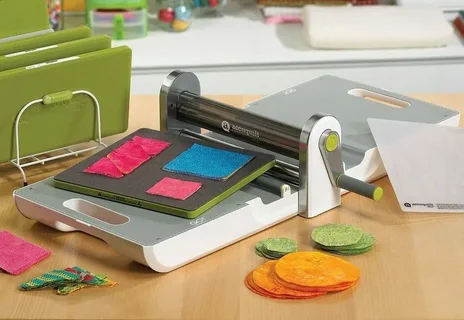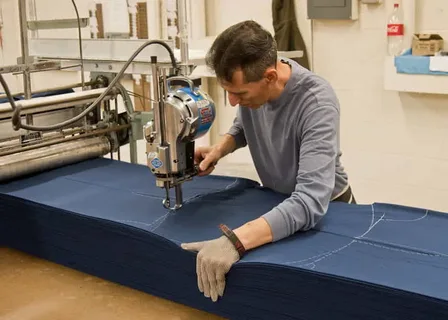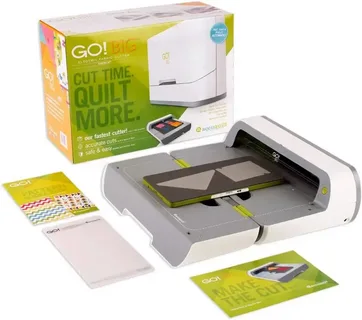Meta Description: Learn all about die cuts – what are die cuts, how they are manufactured, including the use of flatbed dies and a die cutting machine, such as flatbed rotary and semi, what they are used in the packaging industry, the printing sector and industrial purpose. Read on the types of die cutting and cutting cutting tools.

One of the basic manufacturing processes during modern industry, die cutting allows the manufacturer to cut with a rotary dies and semi cutting machine , shape and form the materials in almost infinite applications. Whether it is the package that encloses your daily products or the complex parts in the car manufacturing or electronic industry, die cutting is essential in various industries. , die cuts are critical in the development of the hydrated material we use commonly.
Understanding the Basic Definition of Die Cuts

Die cutting defines a specialized fabrication method, which involves the utilization of machines and apparatuses to transform stock materials by virtue or cutting, forming, and shearing. Die cutting itself is at its most basic, an exercise in taking a made die – basically a sheet of metal tooling (that has a pattern cut out of it) that will cut just the specific shape out of any given material using laser cutting, that you or I want to use, more or less just like a cookie cutter but with the precision and power of an industrial tool.

Die cutting Die cutting is a manufacturing process in which a die is specially engineered and customized by cutting, forming or shearing to create a specific shape, design or pattern. The process allows manufacturer to achieve identical precise shapes cut through a wide range of materials such as paper, plastic, rubber, foam, metal and fabric with impressive accuracy and repeatability.
The Historical Evolution of Die Cutting Technology
Die cutting can be traced back a number of centuries and the word manufactured die finds its basis in ancient practices. The phrase die cutting origin is dated back to the thirteenth century, which also refers to the word de (a middle English word which is believed to have a Latin root word that is datum meaning given as well as put/placed. The practice of casting (or stamping) metal coins in dies was originally used to cast or stamp coins, but this has led to modern die cutting procedures.
The invention of industrial revolution was a great turning point with regard to die cutting technology. Until the 1800s the mass-production of items of similar size and shape was only just fired up, paving the way for high speed production. and the old term of semi rotary die cutting as this term was then used to clarify that it was now made on die cutting machines. Several of the current applications of die cutting such as standardization to make shoe sizes and removing irregularities of hand cutting the sole of the shoe were first realized in the footwear industry.
Essential Components: What Exactly Is a Die?

It is good to have some knowledge on die cutting, and I assume it involves the flatbed die cutters and die cutting system which is the most basic tool which enables the process to occur. Die is like cookie cutters since a particular shape that the metal object comes is the one that will be cut on the material. Depending upon the desired application, dies are made with a number of materials, though steel is used most often in the industrial applications.
Dies are also available in a number of designs that they suit particular materials and different types of use. Steel-rule dies have sharp edges that are covered with plastic or foam as a safety measure, as they are excellent to cut thicker materials or more than two layers at a time. Less sharp and cutting edge thinner metal dies are beneficial in their amounts of weight reduction and storage efficiency, which make them applicable in lighter substances and precision works.
Comprehensive Types of Die Cutting Methods
There is a wide range of methods using the rotary press and semi die cutting industries each is optimized to run on certain materials, production rates and accuracy. The knowledge of such various techniques enables manufacturers to make the most suitable technique to use in their designated applications.
Blanking Process
Blanking involves a flat material and it is cut through by clipping the outer edge of the material making it appear less flat. It is especially useful in the manufacture of flat components using flexible dies with accurate external dimensions especially in the manufacture of automotive gasket, electronic parts and industrial seals.
Drawing Operations
The drawing passes the material through the machine to a certain length. This is normally applicable on long and/or thin products using a hydraulic press . Such process allows producing pieces with long lengths keeping the dimensions of the same cross-section unchanged all along the material length.
Forming Techniques
Forming occurs when the raw material is accomplished on a curved surface. It is normally applied along with your drawing to make the cylindrical components of your custom packaging. The technique involves the use of shaping as well as cutting along with the creation of three dimensional parts using flat materials.
Flatbed Die Cutting: Steel Rule Applications
Steel rule die cutting (sometimes called flatbed die cutting) employs a flatbed die cutting press and unique dies to make its distinctive shapes (dies). It the flatbed dies and rotary die cutting machine works best on heavier material or bigger parts of a packaging or even smaller batch productions. Compared with other packaging techniques, this technique is more precise and versatile, which is why many seek to use it.
Steel rule die cutting is a method that makes use of a wooden or metallic base board in which steel rules are bent and molded into the required shape wires are then embedded along the cutting course. The cutting operation is done by the with rotary die cutters, sharp steel rules and the extra rules are used to do creasing, scoring, and perforations. The strength of this technique is in those applications that involve complex shapes, multiple operations to be done at a single pass and very tight tolerance requirements.
Rotary Die Cutting for High-Volume Production
In larger volume production, we have rotary die cutting whereby we shape a cylindrical-shaped die and use it to cut flexible materials to custom shapes in the form of boxes or custom packaging. It suits high-volume and designs which require high accuracy. Rotary die cutting is the ultimate high speed, high volume of die cutting operation.
Rotary process utilises cylindrical dies that keep rotating and continuous feeding and cutting of the material is possible. This setup has the dramatic benefits of running production speeds up to unbelievable quantities with consistency in quality which is one of the reasons it is used in such manufacturing companies or industries where there is a need to have efficiency and uniformity in the production procedures.
Digital Die Cutting: Modern Precision Technology

In digital die cutting no dies are used. Rather it employs digital die cutters using lasers, blades and tool bits in order to score, crease and cut the material. This group of die cutting has most applications which require short lead times yet they need is considered the best die cutting method for extreme precision. Digital die cut is the latest technology in the industrial scene of incredible flexibility and accuracy.
Digital systems give up the use of actual dies, and allow cutting to be performed by computer-controlled cutting tools. This method also allows quick prototyping, batch production, and complicated geometry that they would be difficult or impossible to manage using the usual die cutting process. The technology is especially good in the scenario where design variations or customization is to be done frequently.
Materials Commonly Used in Die Cutting
Die cutting is an overall term used to describe the process of shearing and cut materials of low strength materials, e.g. rubber, fibre, foil, cloth, paper, corrugated fibreboard, chipboard, paperboard, plastics, and pressure sensitive adhesive tapes, foam and sheet metal, using a die. Die cutting is a flexible technology, solid dies that operates over an extraordinary array of various materials, including those with an adhesive layer., all of which pose special problems and opportunities.
The most popular die cutting materials are paper and cardboard especially when it comes to packaging. These materials provide great cutting ability, good repeatability, and can be produced in the same shape for consistency. , and affordability to high-volume production. Plastic films and sheets must also be cut using an efficient method involving special dies and a cutting machine with specific settings because plastic films and sheets have a tendency to melt or deform when they are cut.
Foam material which can be in the form of closed cell and open cell foam pose a special problem because they are compressible. Effective foam die cutting depends on the use of compression ratios, recovery qualities and die design that are necessary to produce clean precise cuts with no distortion of material.
The Critical Role of Dielines in Die Cutting
Equipped with an outline of what has to be cut, you will first want to have a die cut on any printed material before you make a die cut on any printed material. Here a dieline enters into the custom die cut process. Dielines are specifications to be used in die cutting processes the specification includes cut lines and fold lines as well as other processing requirements.
The die cut printing involves dielines in its process which then describe the shape of the product and the size of the cardboard box before the cutting commences. These technical drawings carry the vital messages among designers, manufacturers, and machine production units, and accurate translation of design intent to physical outputs.
To mark cuts, creases and perforations, dielines include a combination of lines of different types: solid (cuts), dashed (creases), and dotted (perforations). To develop a proper dieline, one should have knowledge on material properties, manufacturing tolerances as well as assembly requirement to realize good production results.
Packaging Industry Applications
A die is used in the die-cutting process in the packaging industry whereby any materials are cut into a range of various shapes, designs and patterns to remove any excess material . It is the main application in the production of folding carton packaging but not restricted to this use. With the packaging industry being the biggest consumer of die cutting services, this technological concept is used in most forms including small boxes and complex promotional displays.
Die cutting helps in ensuring that packaging manufacturers become capable of designing custom shapes that offer protection to the products, better shelf attractiveness, and the ability of facilitating effective distribution. Such things like window cut-outs, handle holes and intricate folding schemes are demanding some sharp precision die cutting work to produce quality work.
Die cutting technology especially helps the food and beverage sector, where it is utilised to produce tamper evident packs, portion control and special containers of unusual product shapes. Pharmaceutical Pharmaceutical packaging is dependent on die cutting of blister packs and Unit-dose packs and child resistant formulation.
Industrial and Manufacturing Applications
Die cutting, in addition to packaging, has an important part in other industrial uses. Die cutting in automotive industries is applicable in specialized pieces like gaskets, seals, insulators, and magnetic cylinder and helps to convert stock material into usable parts. and parts of the interior. Die cutting is used in electronic manufacturers with rotary dies in circuit board materials, thermal control components as well as protective film.
The most cost effective applications require high standards of precision and quality which are applied to aerospace uses such as light weight components, thermal barrier, and special sealing material that use die cutting. Die cutting is used in the medical device industry to produce wound care products, diagnostic products and surgical products where cleanliness and accuracy is required.
Quality Control and Precision Standards
Current die cutting activities require high quality control measures to smoothen out results between different production runs. There are quality measures such as quality checks of dies regularly, testing of materials and verification of the dimensional quality of final products. Statistical process controls techniques monitor the important parameters to detect the trend and avoid defects.
Die cutting accuracy is influenced by several variables such as the die design, the materials used and its properties and machine and manual die cutters and operator capability. Tolerances required on applications can be wildly gyrating, but achieving high precision is crucial for quality. with some industries requiring tolerances of the thousandths of an inch and other industries tolerating looser specs.
Cutting Pads and Plates: Supporting Equipment
Cutting plates are, as they are sometimes called, the cutting pads and they are the means through which your packaging design is created as a kind of a die cut sandwich altogether of all pieces and material necessary to see the day in that design. These auxiliary systems are important in making clean and uniform cuts and also to safeguard the die and cheap cutter as well.
The pads used to cut (cutting pads) act as a stiff material which supports the material during the cutting and also enable penetration of the die to reach the end. The pad material has varied properties of hardness, recovery and long life, which is essential for executing a partial cut effectively. . The appropriate pad selection and maintenance has a direct influence on quality of cut and production efficiency.
Environmental Considerations and Sustainability
The current die cutting activities are more concerned with environmental protection and sustainability. The optimization of cutting pad materials which are recyclable, and the nesting patterns and energy efficient tools used in the reducing of waste materials is a part of the lowered environmental impact.
The industry has put in place a range of waste reduction measures such as reclamation of material, streamlined cutting patterns and also substitute materials with better environmental credentials. Several manufacturers are currently making biodegradable and compostable material in particular to be used in die cutting.
Cost Factors and Economic Considerations
The cost of die cutting varies according to many facts and among them it is the type of material to be cut, its complexity and the volumes to be cut and the specific requirements of the quality. Start-up costs of custom dies are heavy investments, but they are usually paid by large production runs.
Volume is also an important consideration in the choice of method and one method has smaller advantages in one volume and larger advantages in a different volume. Digital die cutting is efficient with regard to prototyping and short-run productions whereas rotary die cutting is more cost-effective in large scale production.
Future Trends and Technological Advances
Die cutting is an industry that keeps growing in the face of technological growth and involves automation, artificial intelligence, and new materials, enhancing machine capabilities for die cutting processes. . Smart manufacturing concepts implement die cutting processes into a more comprehensive product production, which makes it possible to monitor and optimize it in real-time.
New technologies like laser die cutting, waterjet cutting, and ultrasonic cutting have new opportunities attached to them where the 2 old technologies were difficult to use or had very limited applications, especially in low volume projects . These technologies enhance the amount of materials that can be processed and also the levels of precision to which it can be achieved.
Choosing the Right Die Cutting Method
To choose an optimal die cutting technique, we should pay much attention to various factors such as the characteristics of the material, the volume of the production process, the accuracy of the result we need, costs we have to meet. The two techniques have different strengths and drawbacks that they present which should be aligned to the use application.
It is possible to improve identification of the most appropriate implementation method via professional consultations with experienced die cutting specialists. Choices about the most suitable method depend on such factors as the thickness of the material to cut, the complexity of a cutting job, schedule of production, and quality needed.
Conclusion
A die cutting could come in as one of the basic manufacturing processes that could facilitate the exact creation of millions of products in the many industries. Combining accuracy, consistency, and the cutting edge of efficiency, die cutting technology is the technology needed to support modern manufacturing goods, whether they are a simple paper cutout or a complicated industrial component. Knowledge of the different ways of doing die cutting, the materials involved in do die cutting and what products do die cutting enables the manufacturers to want to leave purely to the die cutting manufacturers.
The further development of the die cutting technology foresees an even higher level of precision, allowing for multiple cuts in a single operation. , efficiency and sustainability of die cutting in the future applications. With the continuing growth of materials science and increasing demands on manufacturing, there is no doubt that die cutting will be able to meet the pressures and be able to change and evolve.






